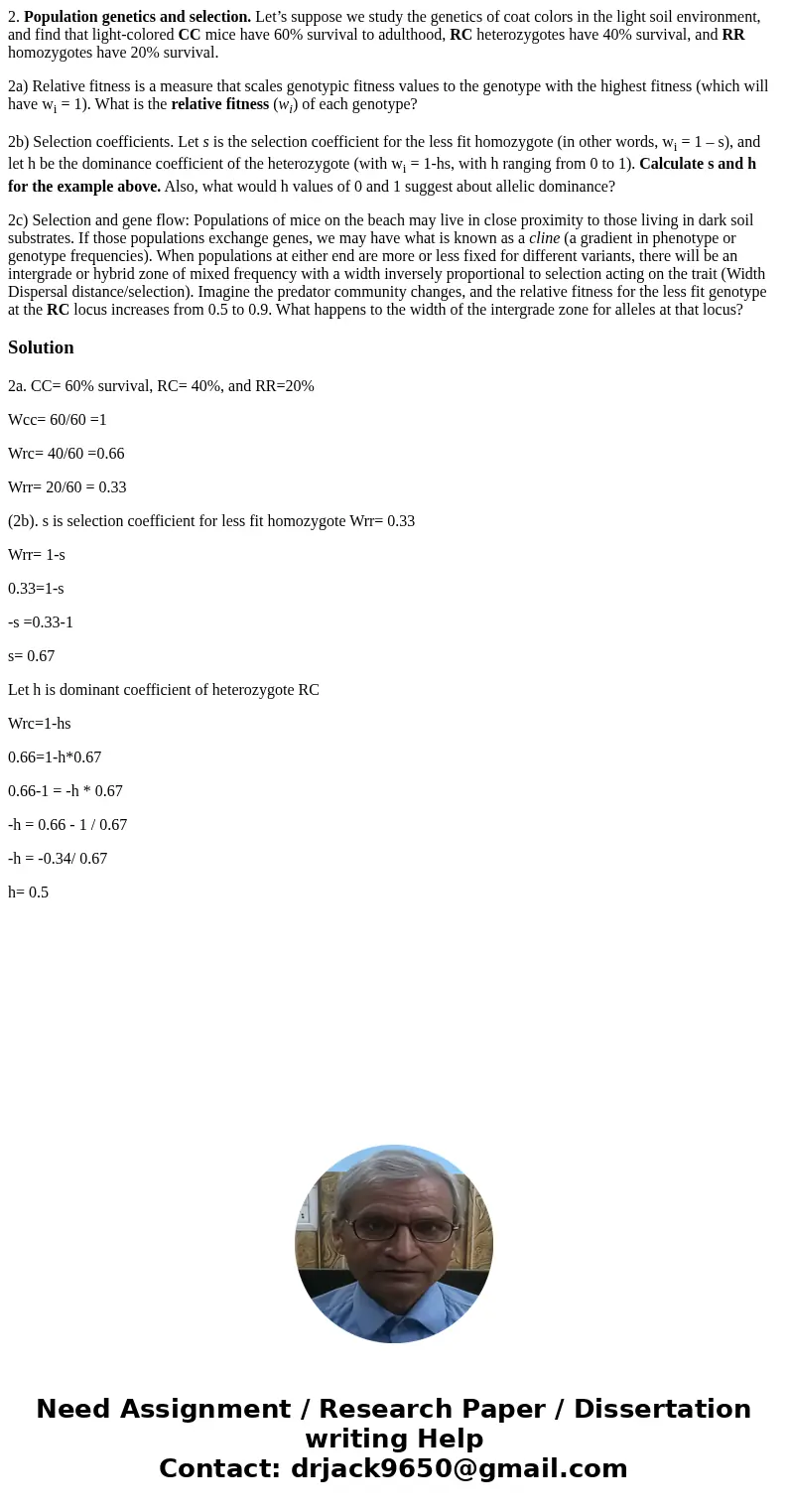2 Population genetics and selection Lets suppose we study th
2. Population genetics and selection. Let’s suppose we study the genetics of coat colors in the light soil environment, and find that light-colored CC mice have 60% survival to adulthood, RC heterozygotes have 40% survival, and RR homozygotes have 20% survival.
2a) Relative fitness is a measure that scales genotypic fitness values to the genotype with the highest fitness (which will have wi = 1). What is the relative fitness (wi) of each genotype?
2b) Selection coefficients. Let s is the selection coefficient for the less fit homozygote (in other words, wi = 1 – s), and let h be the dominance coefficient of the heterozygote (with wi = 1-hs, with h ranging from 0 to 1). Calculate s and h for the example above. Also, what would h values of 0 and 1 suggest about allelic dominance?
2c) Selection and gene flow: Populations of mice on the beach may live in close proximity to those living in dark soil substrates. If those populations exchange genes, we may have what is known as a cline (a gradient in phenotype or genotype frequencies). When populations at either end are more or less fixed for different variants, there will be an intergrade or hybrid zone of mixed frequency with a width inversely proportional to selection acting on the trait (Width Dispersal distance/selection). Imagine the predator community changes, and the relative fitness for the less fit genotype at the RC locus increases from 0.5 to 0.9. What happens to the width of the intergrade zone for alleles at that locus?
Solution
2a. CC= 60% survival, RC= 40%, and RR=20%
Wcc= 60/60 =1
Wrc= 40/60 =0.66
Wrr= 20/60 = 0.33
(2b). s is selection coefficient for less fit homozygote Wrr= 0.33
Wrr= 1-s
0.33=1-s
-s =0.33-1
s= 0.67
Let h is dominant coefficient of heterozygote RC
Wrc=1-hs
0.66=1-h*0.67
0.66-1 = -h * 0.67
-h = 0.66 - 1 / 0.67
-h = -0.34/ 0.67
h= 0.5

 Homework Sourse
Homework Sourse